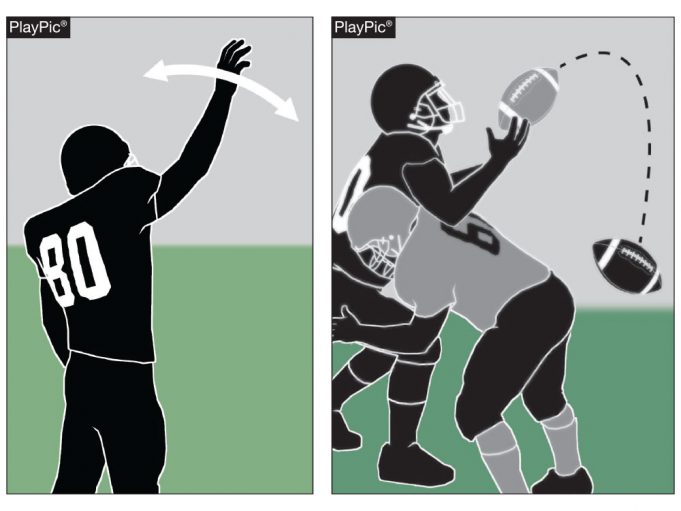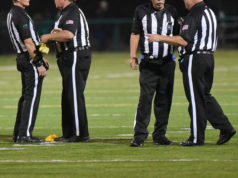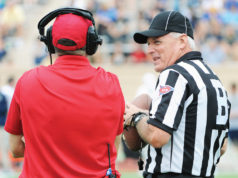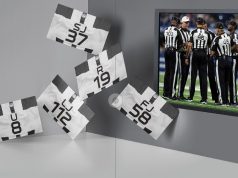A
fair catch is, in effect, a trade. The receiver gives up his right to advance in exchange for freedom from contact by the opponent. One potential catch (pardon the pun) to the deal may be a muff on the part of the receiver.
In PlayPic A, the receiver has given a valid fair catch signal, then muffs the ball (PlayPic B). If the covering official rules the receiver could still make a catch, the action by the team K player is kick-catching interference in NCAA. The receiver may not be contacted until it is no longer possible for a catch to be made (6-5-1b).
Such is not the case in NFHS. The receiver’s fair-catch interference protection ends when he muffs the kick (6-5-6, 6.5.6E)
What's Your Call? Leave a Comment:
Note: This article is archival in nature. Rules, interpretations, mechanics, philosophies and other information may or may not be correct for the current year.
This article is the copyright of ©Referee Enterprises, Inc., and may not be republished in whole or in part online, in print or in any capacity without expressed written permission from Referee. The article is made available for educational use by individuals.
















